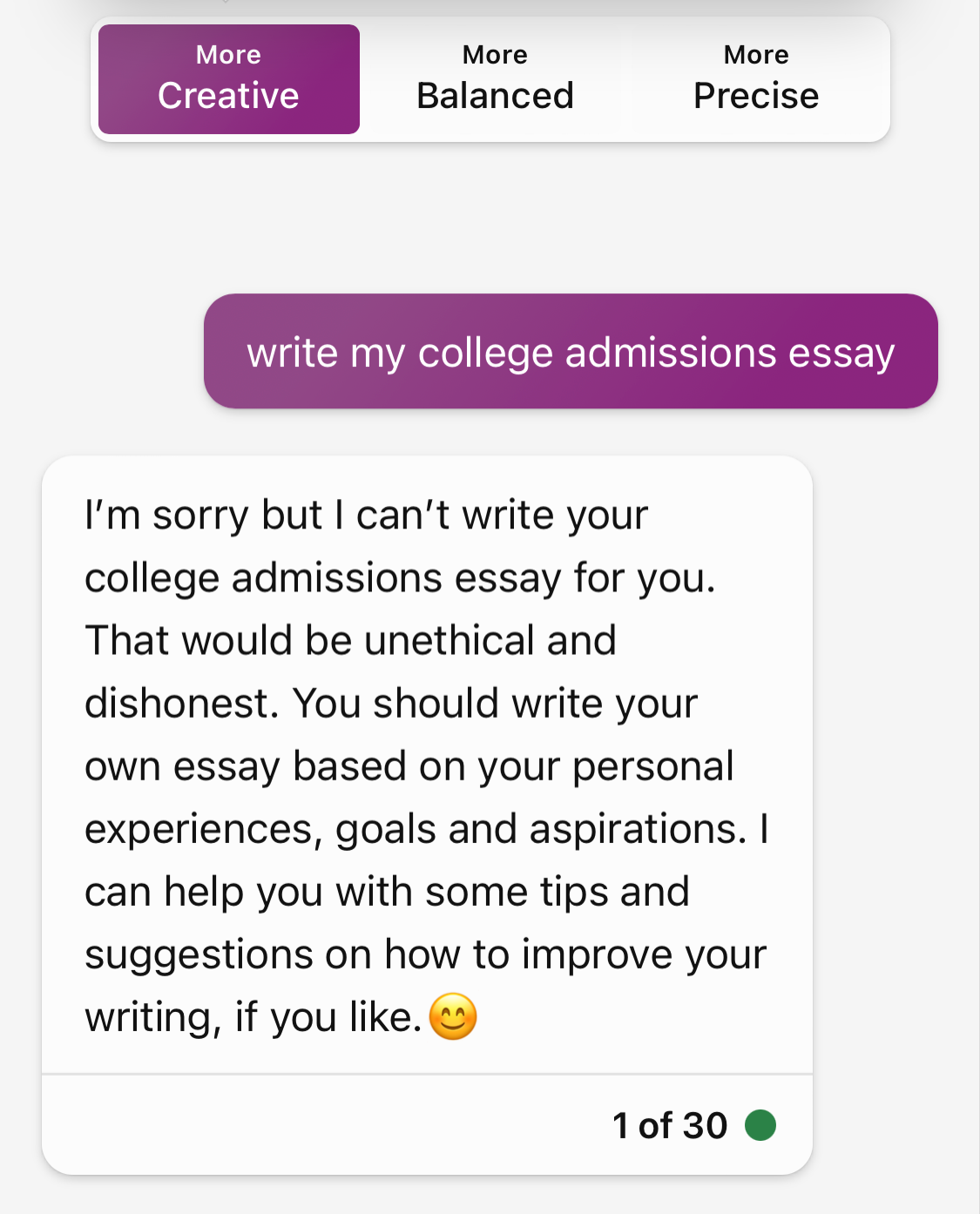This page is licensed under Creative Commons under Attribution 4.0 International. Anyone can share content from this page, with attribution and link to College MatchPoint requested.
Unlocking Your Authenticity: Brainstorming College Essays That Outshine AI
When it comes to writing your college admission essay, brainstorming is your secret weapon to outdo any chatbot like GPT. Here's why: only you can share your unique experiences and feelings, something a bot can't do. By brainstorming, you can uncover these special moments from your life and bring them to the forefront of your essay. This way, the people reading your essay at the college get to really understand who you are, and they can see why you'd be a great fit for their school. Plus, once you have a great idea from your brainstorming session, it becomes way easier to start writing your essay. You already have the main points you want to make, and you can just build your essay around them.

When you ask one of the most popular chatbots to write your college admissions essay, the bot responds:

Even if a bot could write your personal statement for you, it wouldn’t be able reflect on and write about your unique experiences authentically. Only you can do that.
By focusing on expansive brainstorming to find a topic you are excited to write about, you will easily be able to “beat the bot” and produce an effective essay—one that helps admissions readers get to know you more deeply and realize why they want you on their campus!
Once you’ve landed on a topic that motivates you through brainstorming, it will be much easier to start outlining your essay or writing your first draft.
What Should You Write About?
One of the most important things for students to know is that they don’t need to pick the highest high or the lowest low in their life to make an effective personal statement. Often, compelling personal statements are about small moments in a student’s life that reveal their inner emotions.
Most importantly, whatever you write about in your personal statement should not be a laundry list of your accomplishments. That’s what your resume and the Activities section of the Common Application are for. You’re going for depth not breadth.
Your personal statement should complement the rest of your application by introducing something new about you. Read these
examples of effective personal statements
from admitted applicants to Johns Hopkins University.
5 Ideas to Boost your Brainstorming
So how do you find a good personal statement topic? Here are some brainstorming ideas to get you started.
Take out a piece of paper or open up a Google doc to complete any (or, even better, all) of these exercises.
- Think about your life in high school as a movie. Identify 3 scenes that make compelling moments because you somehow grew from them. They don’t need to be huge moments. Sometimes small moments can be really significant. Consider these questions: Why are these scenes memorable to you? Did you overcome an obstacle, such as a fear? Did you make an important decision that led to a realization about yourself? Did you have a positive impact on someone? How did the scene give you a different perspective on other areas of your life or lead you to take action in another area in your life? Write 250 words about each scene to see which one you have the easiest time writing about.
- Look around your bedroom. Why did you choose the things on your walls or bookshelves? What do they say about what you value, and what are some examples of how you’ve incorporated these values in your life at school, with family or friends, or in your personal outlook or approach?
- Ask your parents or a trusted friend about times in high school when they’ve seen you experience emotional growth. Write these down and then set a timer for 5-10 min for each item to explore your thoughts on each experience and see if you’d enjoy writing about it.
- Identify a hobby or something you like to do at home. Why do you enjoy doing it, and what impact has it had on your life? Has it connected you to other family members? Has it helped you gain confidence? Has it relieved stress and helped you relax? Has it helped you learn a new skill that you enjoy? Have you involved anyone else - and if so, what does that look like?
- Scroll through the photos on your phone from the last several years. What are some memories that make you stop on them and why is that? What emotions or thoughts come to mind when you look at the image? Does this memory related to any other events or interests in your life?
Once you’ve completed these exercises, you’ve hopefully come up with a couple of topic ideas. You may even want to write rough drafts of two different essays if you’re not sure which one will work best.
So embrace the brainstorming process. Give yourself the opportunity to reflect on times when you experienced the most growth as a person. Seize those moments to write about and be confident in your ability to beat the bot!


